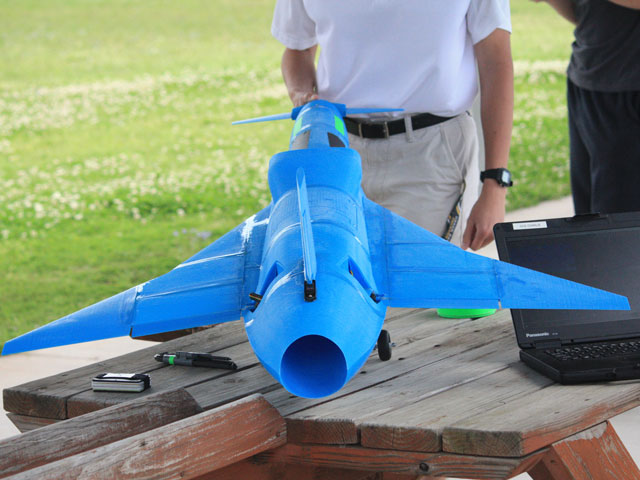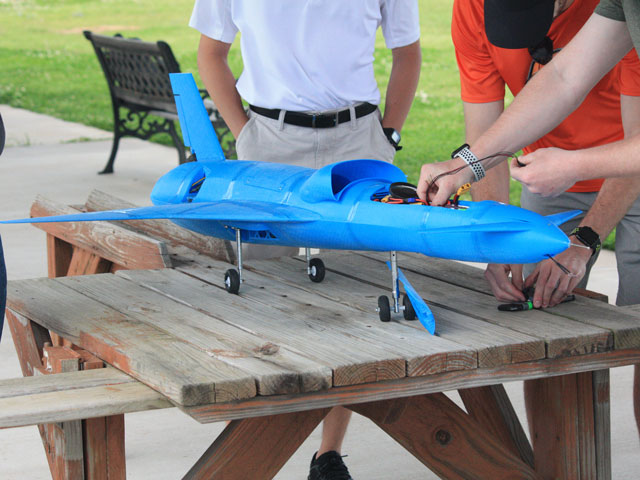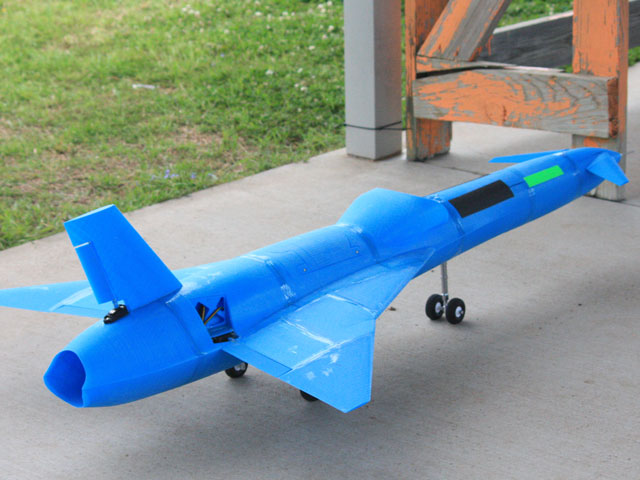
OSU students part of team set to push an unmanned aircraft passed the sound barrier
Monday, January 10, 2022
Media Contact: Kristi Wheeler | Manager, CEAT Marketing and Communications | 405-744-5831 | kristi.wheeler@okstate.edu
Sound barrier (noun): a sudden large increase in aerodynamic drag that occurs as the speed of an aircraft approaches the speed of sound or 760 miles per hour.
On Oct. 14, 1947, Captain Charles “Chuck” Yeager became the first person to pilot an aircraft that reached speeds in excess of Mach 1 — or the speed of sound.
Within the next 18 months, a student-led group, known as Project Boom, plans to be the first team to design, build and pilot an unmanned aircraft capable of flying faster than the speed of sound.
A group of close to a dozen former and current College of Engineering, Architecture and Technology students from Oklahoma State University are part of an approximately 200-member team spanning the globe, all working toward the common goal.
Cole Replogle, CEAT graduate and current University of Cambridge student, helped form the project with a family friend.

“We sat down and tried to figure out if it was even possible to build an unmanned aircraft capable of breaking the sound barrier,” Replogle said. “We found out that maybe it was, which was good enough for us, so we began moving forward with the project.”
Replogle began recruitment for the project with peers he met at OSU who have since become integral members of the team. Johnathan Burgess, the chief engineer for the team and recent CEAT graduate, was one of the first people contacted and jumped at the opportunity.
“This is a project that I couldn’t let pass by,” Burgess said. “Being a part of this project is a once-in-a-lifetime opportunity.”
The team began by constructing the engine test platform, which they documented on the popular website Reddit, and the rest, as they say, was history.
Seemingly overnight, the small team of students began receiving requests from students around the world who wanted to be involved with the project and it was quickly determined that no one would be turned away.
“The goal of the project is to be a credibility source and knowledge gaining experience for the team members,” Replogle said. “We wanted everyone that wanted to volunteer their time to have the opportunity to work on the project.”

To date, the team has constructed a 3D printed model of the aircraft, outfitted with an electric turbine motor and similar avionics and control systems to the proposed final build. The overall plan is broken down into three prototype aircraft. This first prototype is meant to be a platform for “proof- of-concept” for flight controls, system controls and avionics.
The second phase, which the team has begun, has the team now focused on constructing a carbon fiber body that will serve as a scaled version of their final aircraft. It will also provide the team its first opportunity to use a fully functional jet engine for the project.
The team has secured the location for future tests nearing the sound barrier. They have been granted access to a military testing facility in the Nevada desert that will serve as an ideal location for the project’s airborne efforts moving forward.
“This location provides us with an ideal location for testing aircraft that reach such high speeds,” Burgess said. “The flat terrain and open space devoid of structures and human population provides a location that lowers the amount of factors we have to take into account when flying. We can shift more of our focus to just the aircraft and the flight, without having to worry about a lot of outside factors.”

The teams’ goals are two-fold. First is setting their sights on breaking the current Guinness World Record for fastest unmanned, remote-controlled aircraft, currently set at approximately 450 miles per hour by Niels Herbrich of Germany in late 2017. If all goes according to plan, Project Boom plans to attempt a new record by early 2022.
Once the Guinness World Record is conquered, the team plans to pick up speed toward breaking the sound barrier. However, the challenges they will face getting to that point are not ones they take lightly. The team understands that they must overcome challenges facing all facets of the project, from propulsion, to avionics, to flight controls. The closer the team gets to supersonic flight, the more problems they envision facing.
“A person could earn a doctorate studying the effects of the transonic regime (the sector of flight as speeds near the sound barrier) on all phases of flight,” Burgess said. “There are so many variables we’ll have to take into consideration the closer we get to breaking the sound barrier.”
Replogle hopes that, as the team reaches more milestones and documents them, the more likely that larger sponsors will be to help fund the next phases.
“I’ve been really surprised at the level of support we’ve gotten for the project from people in industry,” Replogle said. “From software to capital for the purchase of materials, we’ve been very pleased with the support we’ve gotten so far, and hope that our successes encourage others to help with the project.”
The personal side of the project is not lost on its members either. The project has afforded its members the opportunity to network with and learn from leaders in the aerospace industry. The project has also given members new areas of research focus, provided opportunities for employment and even opened doors to new avenues of study.
“I’ve really enjoyed watching the team grow, learn and have success,” Burgess said. “It’s allowed me to tap into my family’s teaching roots and helped me realize that my success is seeing other members have their own success. Knowing that I may have played some small role in that success is very fulfilling for me.”
The sound barrier is the goal, but the journey has been abundantly rewarding already.
Photos by: Jeff Hopper
Story by: Jeff Hopper | IMPACT Magazine
